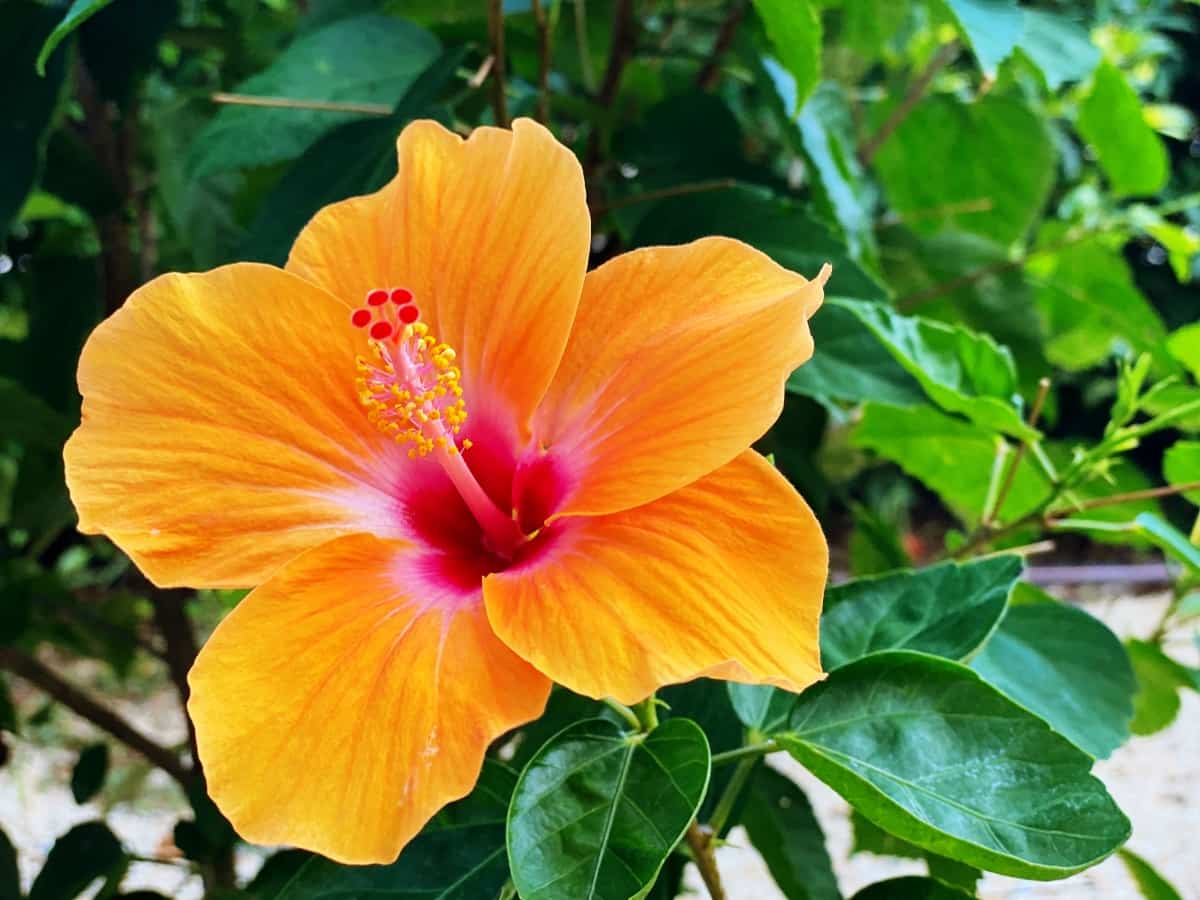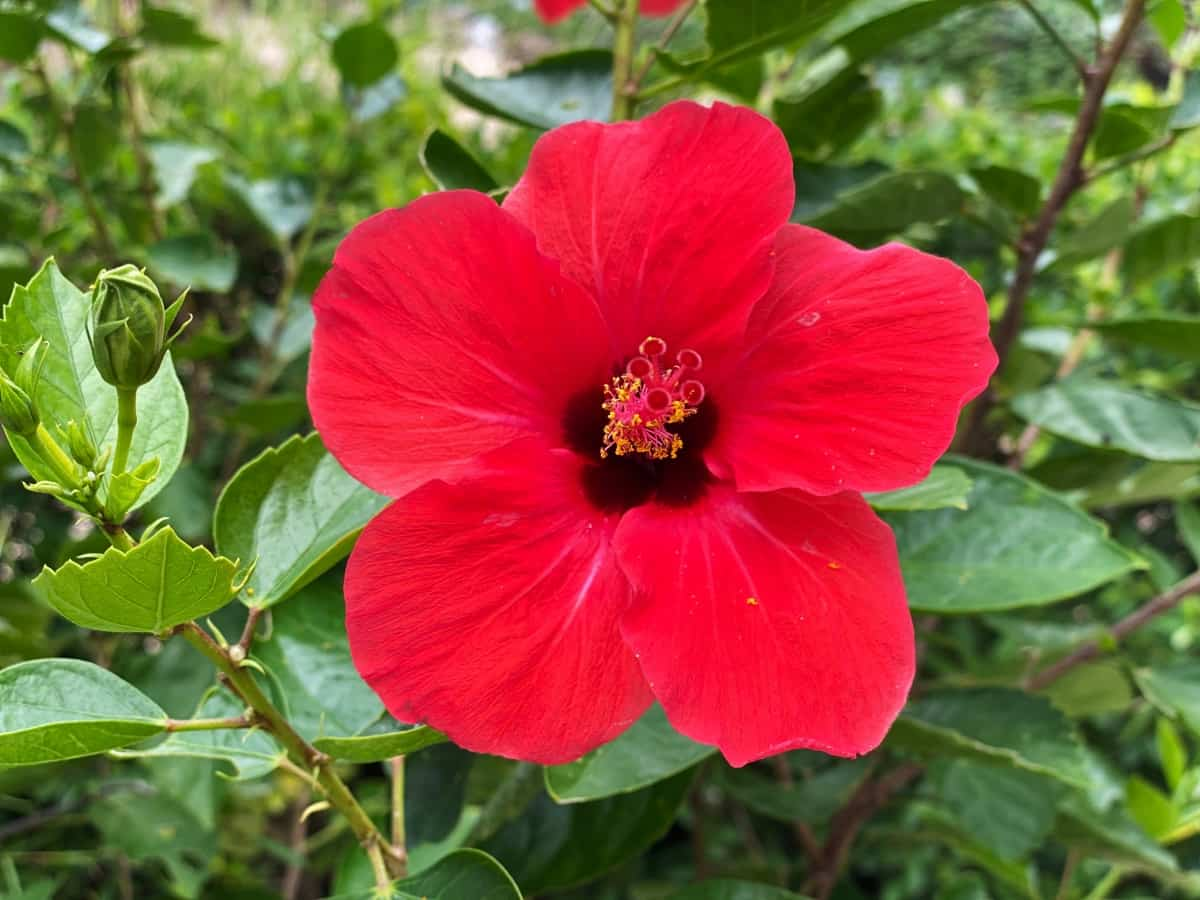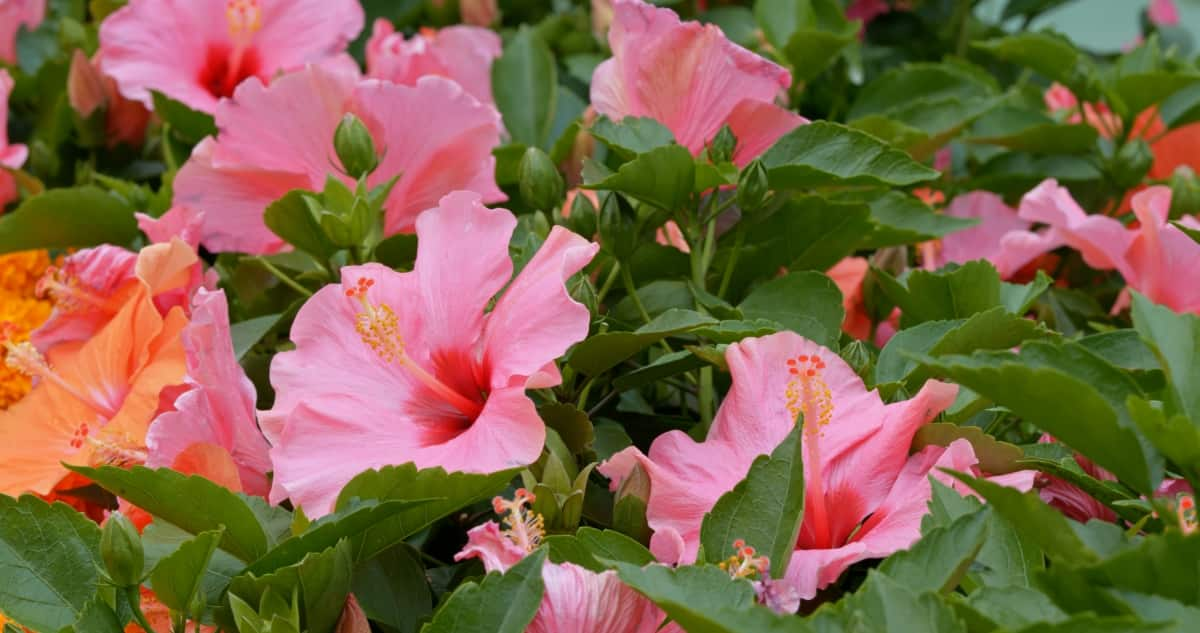Beautiful flowers bloom on the Hibiscus plant during the winter months. Hibiscus plant death is a common complaint among many people. Throughout this article, you will find an answer to this question. While caring for the hibiscus plant, you should consider several factors. Poor care is the main cause of these plants dying. The following are the causes of hibiscus plant death.

8 Causes of Dying Hibiscus
Lack of Moisture
The Hibiscus plant thrives in moist soil with organic matter. Watering your plants regularly prevents the soil around their roots from drying out. Consequently, the plant won’t be able to hold the leaves due to lack of moisture. As the leaves turn yellow, dry, and crispy, they lose energy to hold on and fall off, causing the plant to die. It occurs when you don’t water the plants deeply or for a long time without watering them.
Ensure the soil is moist by watering deeply. Ensure the soil isn’t soggy by dumping water on it. Ensure the excess water drips out the drainage holes to ensure the water reaches the roots. Make a shallow well around the grounded plants to determine whether water seeps through the root ball.
Overwatering and Root Rot
As hibiscus plants require consistently moist soil, they must be watered daily. It is easy to overwater them because of this. As a result, the plant’s roots will be suffocated by the water, which stands over soggy or waterlogged soil. Root rot can occur due to overwatering. If roots are left in water for too long, they will become mushy and slowly rot. If a plant’s roots do not receive nutrients and moisture, it will die.
If your plant is overwatered, stop watering it and wait until the soil dries. Ensure that they have sufficient sunlight and air circulation to help them dry. You should only water your plants once the top 1-2 inches of soil have dried. You can improve drainage by adding perlite, sand, or gypsum to the soil. Make sure your potted plant has drainage holes.
Lack of Sunlight
Sunlight is essential for hibiscus plants. The Hibiscus thrives in direct sunlight for six to eight hours a day. A plant cannot develop properly or produce flowers if it does not receive enough sunlight. A plant cannot utilize its full energy potential if it receives complete shade. Low light stunts the plant’s growth, prevents it from blooming, and causes its leaves to turn discolored and fall off. The majority of people think their plants are dying when this happens.
You should recheck the location if your plant has no flowers and the leaves turn yellow or fall off. It is recommended to transplant the plant to a sunny spot if the current one is shady. If the plant is potted in a container, move the container. You can allow Hibiscus sunlight by removing branches from trees that block the sunlight.
In case you missed it: How to Care for Hibiscus in Pots: A Step-By-Step Guide

Low Humidity Levels
Plants from the hibiscus family are native to tropical regions and prefer high humidity levels to flourish. Low humidity or windy conditions will cause the plant to lose leaves. Due to these situations, the plant’s moisture level will become depleted. This moisture depletion will ultimately cause the plant to lose its flower buds and eventually die.
During the winter, bring your Hibiscus plant indoors and mist it regularly to maintain a humid environment. You can increase humidity around your outdoor plant by adding a compost layer around the base, covering the plant with a frost cloth in winter, keeping some water trays, and grouping tropical plants.
Lack of Nutrients
The hibiscus plant is a heavy feeder. If it does not receive enough nutrition, it won’t develop properly and will die. Nutrient deficiency is caused by sandy soil due to its lack of nutrients. Moreover, fertilizers have poor retention qualities, so they cannot hold nutrients from them. The majority of potted plants are deficient in nutrients. Only very small amounts of nutrients are present in the soil in containers. Eventually, the plant will die if you don’t do anything about it.
Your Hibiscus plant needs to be repotted every year with new soil if it is in a container. If they are grounded, you can mulch your Hibiscus plants in spring and winter. By doing so, soil fertility and structure will be improved, and moisture will be preserved. Hibiscus needs to be fertilized every two weeks with liquid fertilizer (NPK 17-5-24) during the growing season. In winter, reduce the frequency.
Low Temperature
Frosty weather is not suitable for tropical Hibiscus plants. Low temperatures around 13-15°C are not a problem for tropical Hibiscus. Hibiscus can tolerate temperatures as low as 0°C but should be brought indoors when temperatures drop below 10°C. Assume Tropical Hibiscus remains outside at temperatures below 0°C at night for a long period. If that happens, the plant will suffer freeze damage and die.
In regions that receive frost and temperatures lower than 10°C in the fall, bring Hibiscus indoors. When your plant’s leaves are discolored, bring it inside as soon as possible. It should keep in a warm room with a temperature range of 18-24°C to recover. Cover it with a frost cloth in winter and add a thick layer of mulch. The plant will stay dormant and come back in the spring.
Diseases
Rust, black spots, crown or stem rot, and botrytis can damage Hibiscus. Proper treatment will overcome the plant, however. Among the diseases, canker disease is the most serious. Infection occurs when a pathogen is exposed to the fungus Botryosphaeria and spreads through water or rain. In addition to causing cankers in the plant, the disease also kills plant tissue in different locations.
All the leaves of a plant wilt when infected with wilt disease. Besides being deadly, it is also very contagious. Despite their ability to control other diseases, fungicides cannot cure canker disease. It is necessary to remove the diseased parts of the plant. Injuries are common during repotting and pruning. When performing these two, be careful not to injure yourself. When treating Wilt disease, don’t remove all the wilted leaves. Yellow leaves should be removed only.
Pest Infestations
The plant can also be killed by pests such as aphids, mealybugs, spider mites, thrips, scales, beetles, caterpillars, etc. By sucking all the sap from the plant, some will weaken and kill it, while others will kill it by skeletonizing the leaves. Some bugs lay eggs inside flower buds. The bud drops as a result. Many beginners consider the plant dead because they are so worried about it. Besides sucking sap, the insects release honeydew, which invites a sooty mold fungus.
- Spray neem oil directly on the area that is infected.
- Allow the plant to absorb Imidacloprid by applying it to the soil. By sucking sap, bugs absorb this chemical and die.
- Insecticidal soaps can be used to coat the bugs. It will stop the supply of oxygen and kill them. The plant should be washed off and cleaned after 15-30 minutes.
- If there are few insects, handpick them.
In case you missed it: How to Grow Hibiscus from Cuttings: DYI in 10 Simple Steps

Conclusion
Reviving a dying plant is easy once you know the problem and solutions. You should identify the cause of stress and take action as early as possible to fix it. Make sure they have enough light, water, and fertilizer. In spring and winter, repot the grounded plants with new soil and mulch them. Cold weather should be avoided when growing tropical Hibiscus plants.
- Feed Your Flock for Less: Top 10 Tips to Save on Chicken Feed
- Ultimate Guide to Ossabaw Island Hog: Breeding, Raising, Diet, and Care
- Hatching Answers: The Top 10 Reasons Your Chickens Aren’t Laying Eggs
- Eggs and Economics: Breaking Down the Cost of Raising Backyard Chickens
- Defend Your Greens: Proven Methods to Keep Iguanas Out of Your Garden
- Ultimate Guide to Cinnamon Queen Chicken: A Comprehensive Guide for Beginners
- Ultimate Guide to California Tan Chicken: Breeding, Raising, Diet, Egg-Production and Care
- Ultimate Guide to Marsh Daisy Chicken: Breeding, Raising, Diet, and Care
- 10 Types of Chicken Farming Businesses You Can Start for Profits